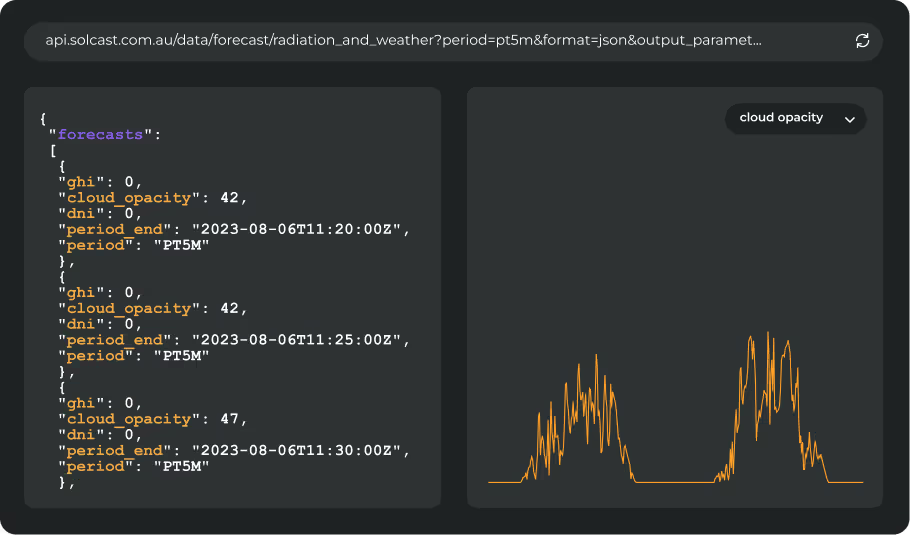Northern Europe outshone the Mediterranean in March, as unusually dry conditions led to record-breaking solar irradiance and generation across the UK and Germany. A westward shift in the Azores High blocked Atlantic weather systems from reaching northern Europe, instead diverting moisture into the Mediterranean basin. This trend led to up to 30% above-average irradiance across parts of northern Europe, while irradiance in traditional southern holiday spots dropped as much as 30% below seasonal norms.
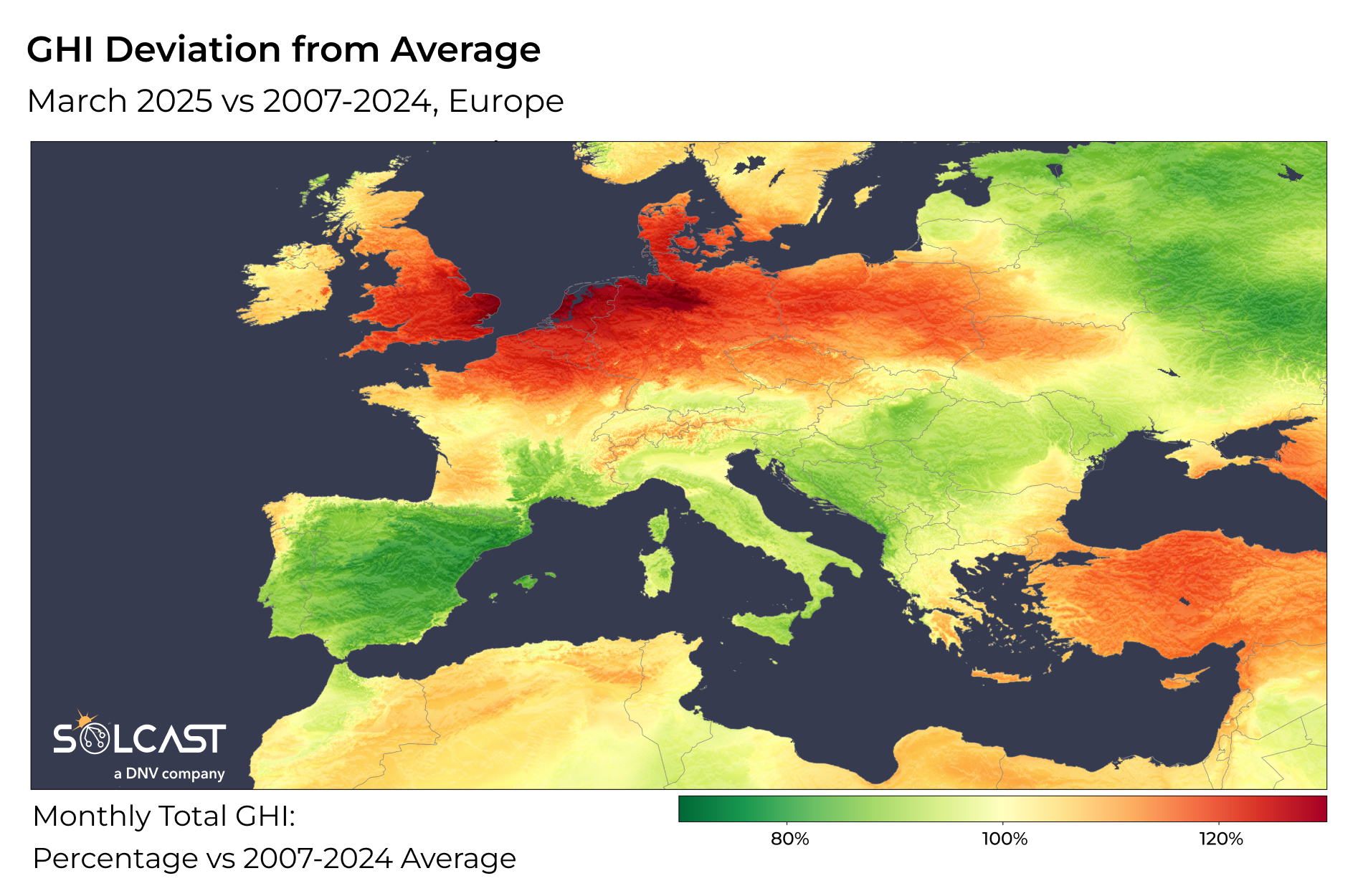
Irradiance across England, the Benelux region, Denmark, northern France, northern Germany, and northern Poland surged well above long-term March averages. For the UK and wider northern Europe, it was an unusually dry month, with limited frontal activity. This was driven by the westward displacement of the Azores High, which resulted in more persistent high-pressure blocking over the continent’s north and limited the usual stream of Atlantic lows. The result was stable, sunny conditions ideal for solar irradiance.
The surge in irradiance experienced in Northern Europe was reflected in several grid aggregations across the region. Germany, in particular, saw its second-highest March irradiance in over a decade.
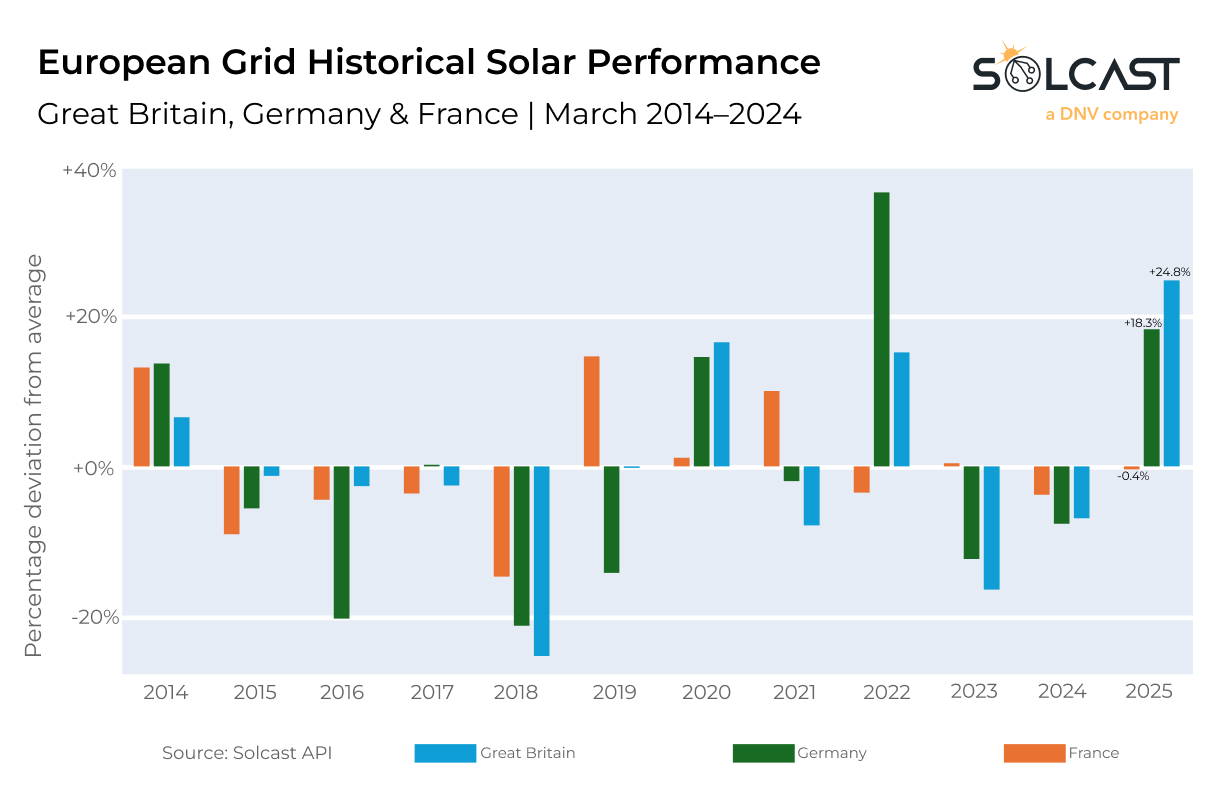
In the UK, aggregated solar irradiance reached its highest March value since 2014. The UK grid aggregation has steadily increased, with capacity growth playing a key role in higher solar output, particularly during sunnier months. This trend aligns with the March 2024 surge, demonstrating how both weather conditions and growing capacity are driving solar generation to new highs.

Meanwhile, the Mediterranean region experienced a contrasting story. The same atmospheric blocking that benefited the north redirected Atlantic moisture much further south than normal. This brought a surge of cloud cover and precipitation to the Mediterranean basin which resulted in an unusually wet month. Most of Spain, including major solar hubs in the south and central plateau, recorded irradiance values 30% below March norms. France’s Mediterranean coast, the Italian Riviera, and the islands of Corsica, Sardinia, and Sicily also recorded irradiance drops of up to 20%. A similar deficit extended eastward from the Balkans to the Black Sea region, all of which experienced persistently overcast skies and frequent rain systems.
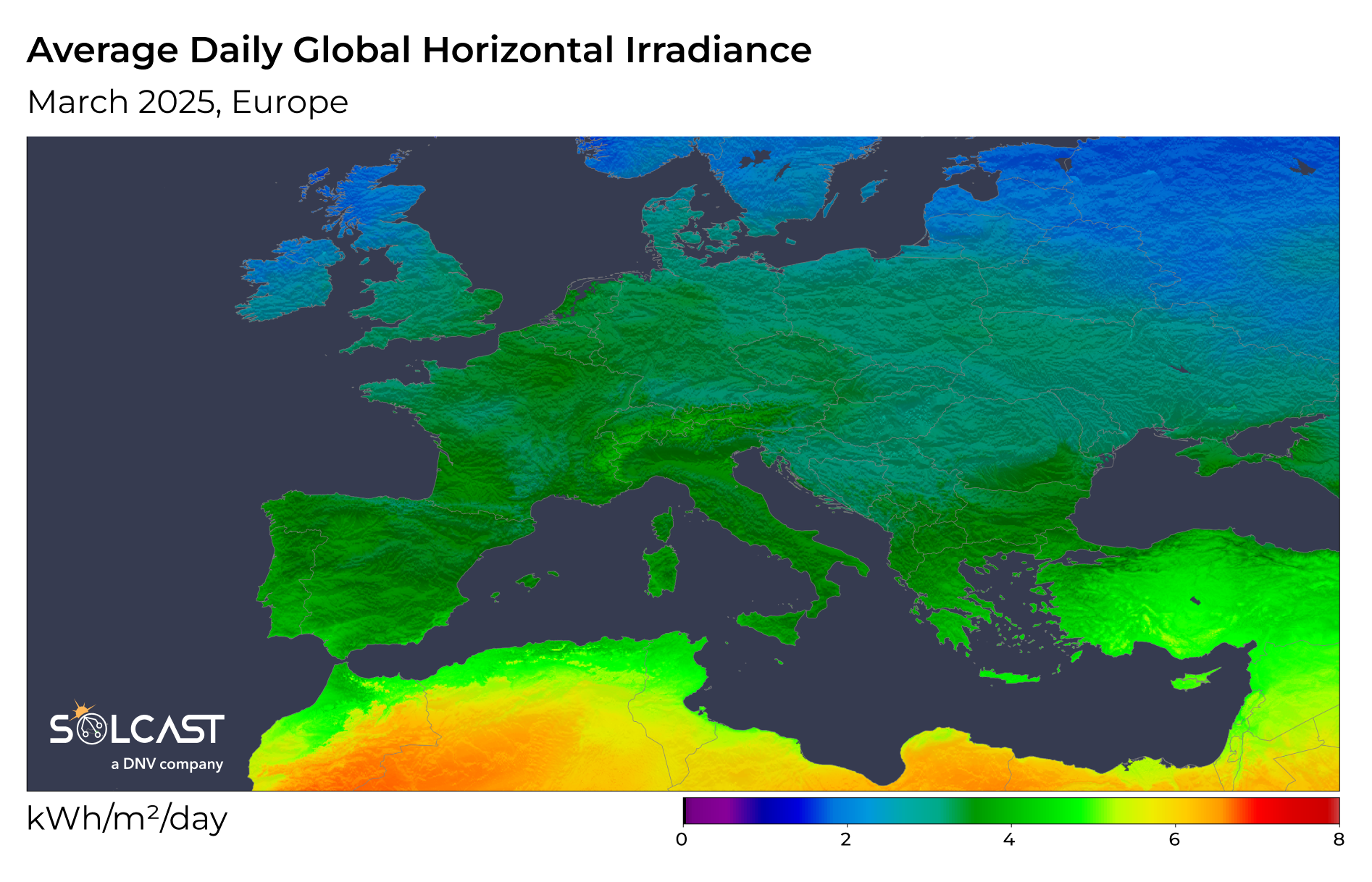
Track weather conditions, cloud movements, and irradiance-influencing factors that impact your solar generation. Access bankable actuals and accurate forecasts when you sign up for a Solcast API toolkit. You can reach out to our team for an extended trial.








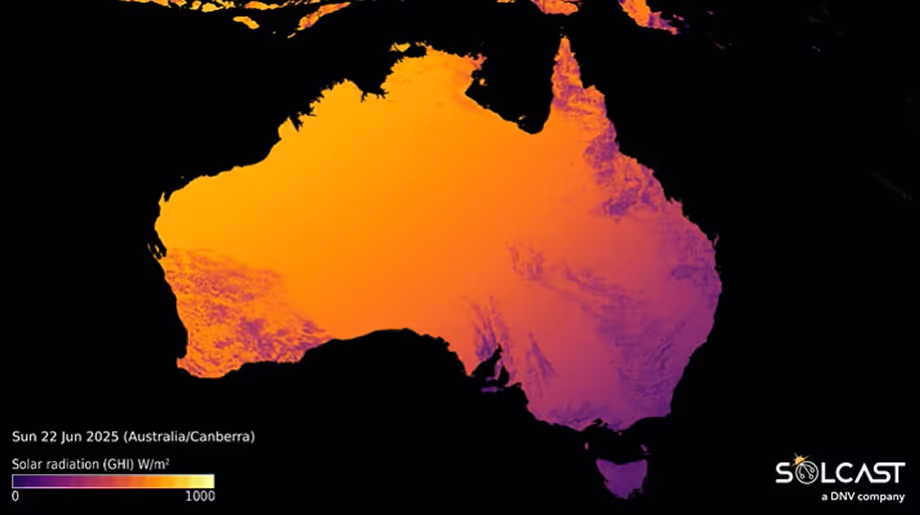
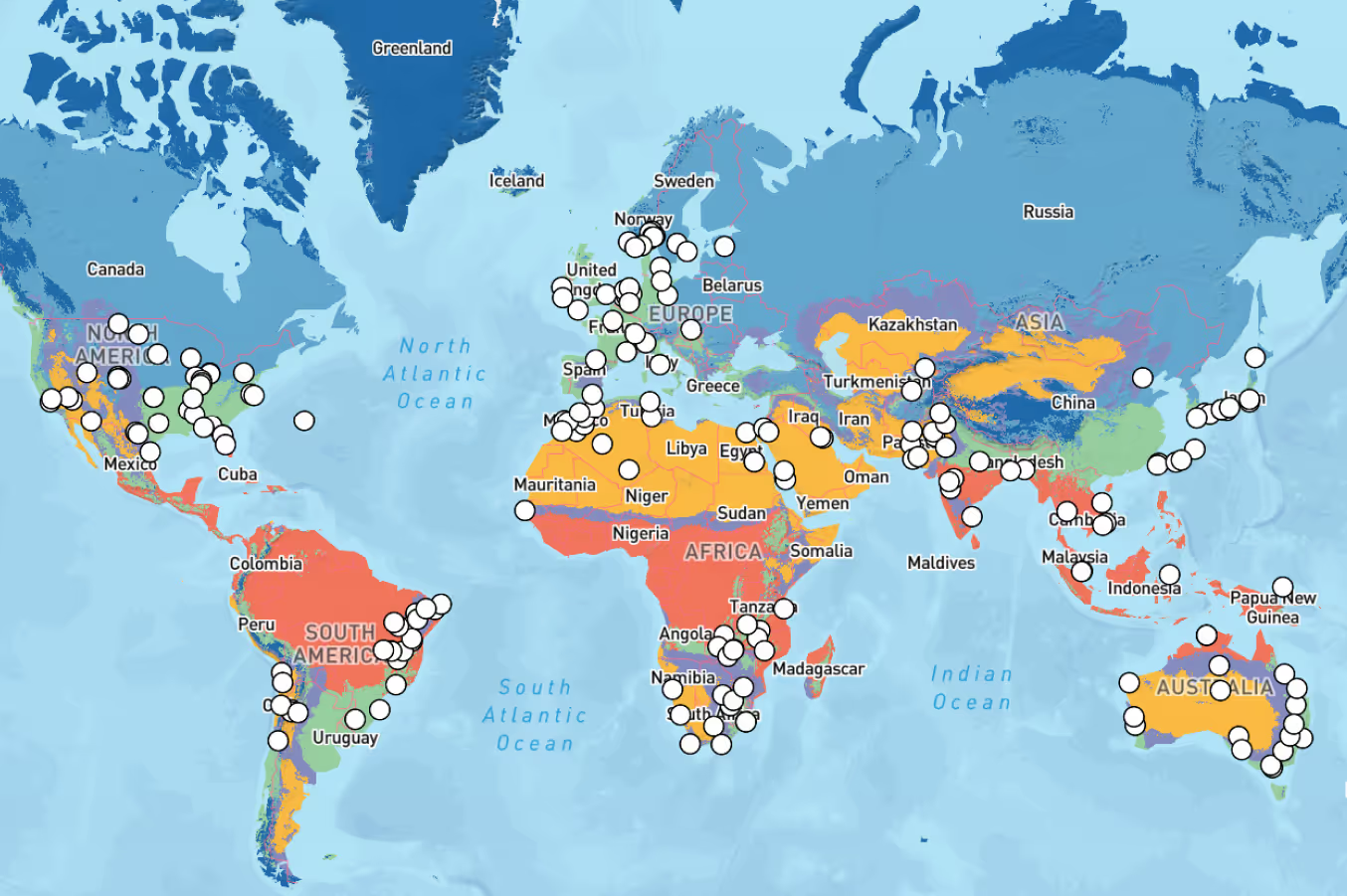
.avif)
